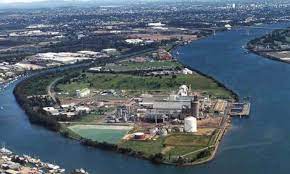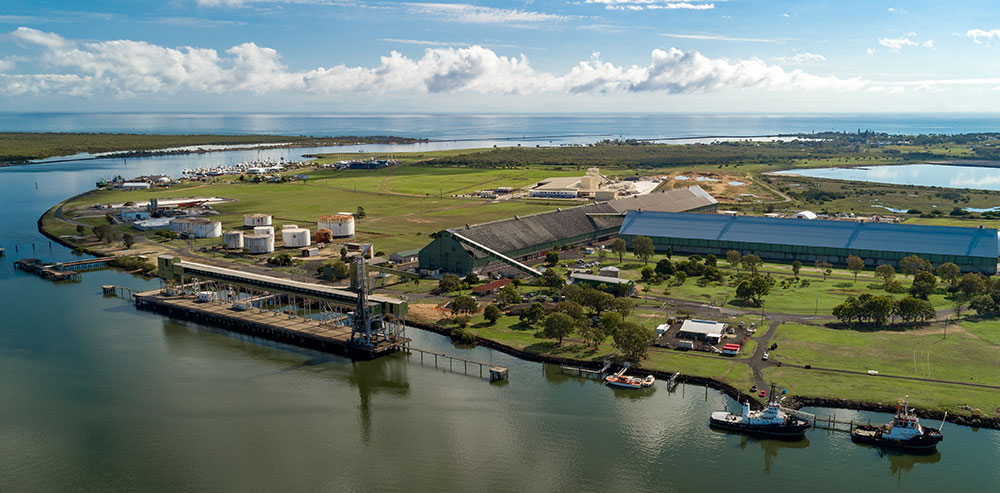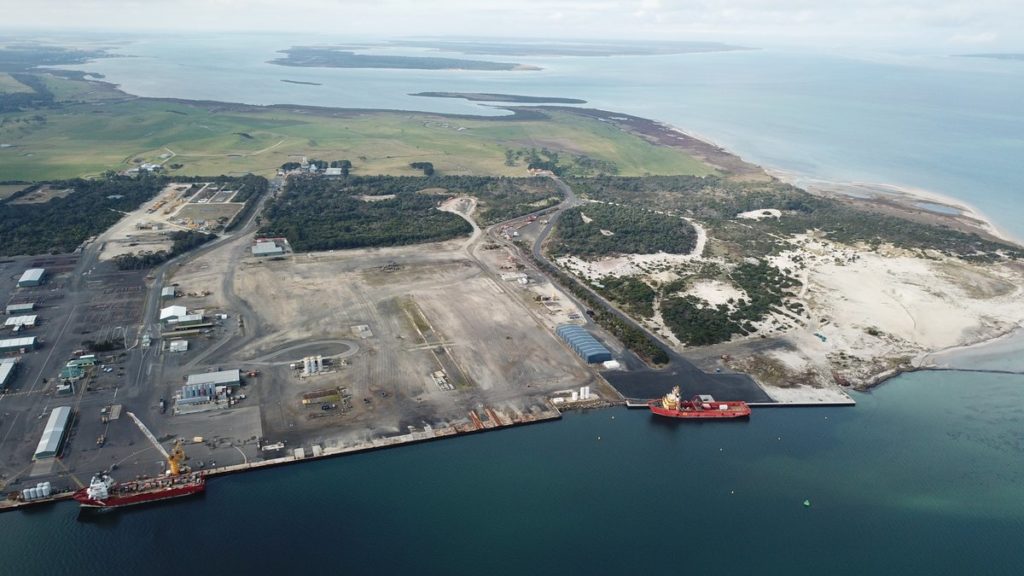Three new Australian ammonia production projects
By Julian Atchison on October 15, 2021
Gibson Island – Incitec Pivot and Fortescue Future Industries

FFI and Incitec Pivot (Australia’s largest fertiliser supplier) will partner up to investigate the feasibility of converting Incitec’s ammonia production plant at Gibson Island, Brisbane to run on renewable hydrogen. Currently Gibson Island uses natural gas as a feedstock. The cornerstone of the plan is construction of an on-site, 55,000 tonnes per year renewable hydrogen electrolysis facility. Results of the feasibility study are due by the end of this year.
The project, if successful, will safeguard several hundred manufacturing jobs in Queensland, in addition to creating a new domestic and export market for green, renewable ammonia. The resulting green ammonia could also provide a low-carbon fuel supply to the Port of Brisbane and Brisbane airport.
“FFI’s partnership with Incitec Pivot is an exciting opportunity to harness existing infrastructure at Gibson Island, fast tracking the production of green ammonia at an industrial scale,” said FFI Chief Executive Officer, Julie Shuttleworth AM.
FFI’s official press release, 11 October 2021
Bundaberg – “carbon negative” hydrogen and ammonia production hub

Also in Queensland, CAC-H2 and Clean Holdings are leading development of a project that will gasify agricultural waste (sugarcane) to produce hydrogen. A deep water wharf will be constructed at the nearby Port of Bundaberg to enable export of hydrogen and ammonia (30,000 tonnes per year) to Japan and South Korea. Speaking with the Australian-based pv Magazine, Clean Holdings’ chief executive Ken Mathews said that – if this project proves viable – his organisation is aiming to replicate the Bundaberg project at deep water ports along Australia’s east coast.
CAC-H2, which is delivering the gasification technology for the project, claims its method is carbon negative, since it generates hydrogen from materials which sequester carbon leaving it with a biochar byproduct which can then be reused in agriculture.
Next to hydrogen, the (gasification) units output nitrogen (50%) and carbon dioxide (20%). CAC-H2’s Chief Executive of Energy Arman Massoumi said the company will likely release the nitrogen into the atmosphere because it has a low market value, while the CO2 will be emitted “into a greenhouse farm” or otherwise used or sequestered.
Despite these two greenhouse gas byproducts, Massoumi is adamant the company’s process is still carbon negative thanks to its biochar. Biochar is basically charcoal and contains much of the carbon its source plant sequestered. Biochar is an increasingly in-demand product for agriculture, used to build soil and help it retain water.
This valuable byproduct, according to Massoumi, means CAC-H2’s processes are “greener than green” with the executive saying for every tonne of biochar, the equivalent of 3.67 tonnes of carbon dioxide is sequestered. After the release of carbon dioxide and nitrogen during gasification, Massoumi says the final ‘carbon receipt’ of the company’s process is reduced to around 2.5 to 3 tonnes worth of sequestration, still placing it firmly in the black.
‘Carbon negative’ hydrogen & ammonia hub plan partially unveiled for Bundaberg (author Bella Peacock), pv Magazine Australia, 6 October 2021
Port Anthony – 75,000 tonnes per year ammonia export
And CAC-H2 will lead another joint venture (this one in Port Anthony, Victoria) that aims to produce carbon-negative hydrogen and ammonia from woody waste biomass. The same gasification technology as Bundaberg will be used, creating a number of valuable by-products:
“Our by-products are also great for the agricultural sector and construction industries who can use our biochar & wood vinegar [a so-called ‘superfood’ for plants with the chemical formula C5H4O2] for environmental purposes, or blend the biochar with cement for a ‘green’ building product”, said Glenn Davies, Chief Executive at CAC-H2.
“And because we’re helping with a waste removal problem, avoiding landfills or incineration, we are often paid to remove this [woody biomass] feedstock.
These multiple revenue streams, including carbon credits, “allow us to have one of the most effective production costs for green hydrogen in the market today — at least a third of what it costs via electrolysis. Our internal commitment is to meet global demand for hydrogen at $2/kg by 2030.”
‘We will produce carbon-negative green hydrogen at a third of the price of standard renewable H2’ (author Leigh Collins), Recharge News, 12 October 2021

The Port Anthony project aims to produce 75,000 tonnes ammonia per year and 1,000 tonnes hydrogen per year for export by 2023. Port Anthony is a remote shipping terminal east of Victoria’s capital city Melbourne, though at present it is only equipped to handle dry-bulk cargo and has traditionally supported oil & gas exploration in the nearby Bass Strait. The joint venture is being developed between CAC-H2 and local organisation Port Anthony Renewables.